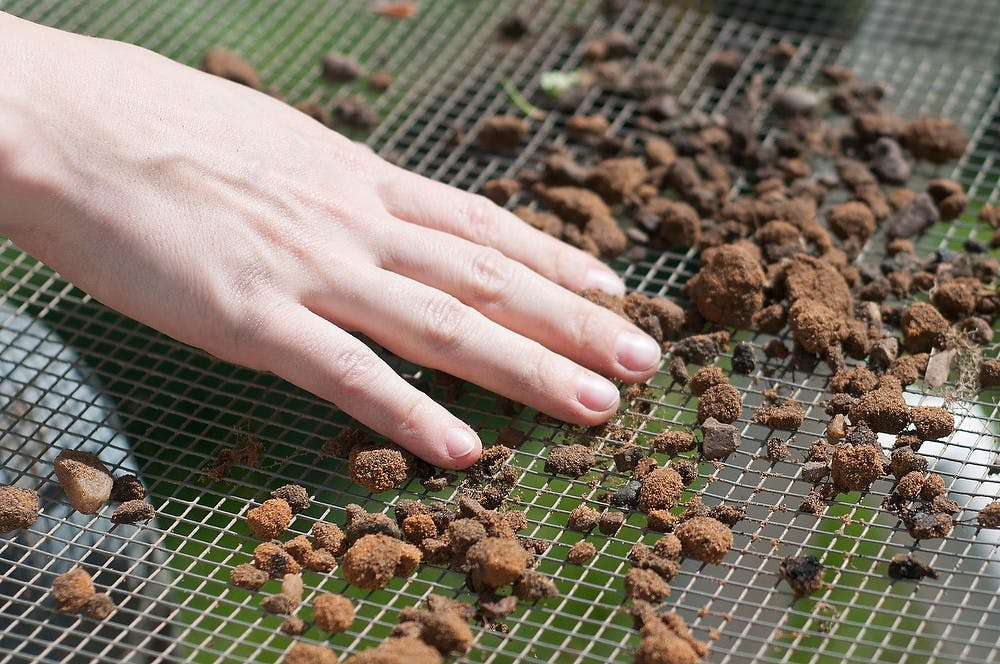Lynne Goldstein and her team of archaeologists are on a mission to unearth the blueprint to MSU’s past.
After uncovering a 1900s boiler room on campus nearly a year ago, the MSU Campus Archaeology Program currently is working on West Circle Drive, where sidewalk construction has been ongoing for nearly a month.
Campus archaeologist Katy Meyers said the team recently found burnt building material in this excavation, leading to questions of what else could be found on the 158-year-old campus.
“As they replace sidewalks, we try to see if anything significant is buried,” Meyers said. “It is definitely historic, but we are yet to figure out what the burnt building material signifies. Earlier we have found glass and ceramic during excavations.”
Since the program started in 2007, the MSU Campus Archeology Program students have excavated three campus buildings. Meyers said the first dormitory on MSU’s campus and the first academic building have been excavated by campus archaeologists.
Archaeological technician Katie Scharra said she takes pride in being part of the team that preserves cultural heritage on campus.
“We do archeological investigation of construction sites,” Scharra said. “When there is construction on campus, we make sure the cultural heritage of MSU is not lost. We pay attention to where the construction is going on, (and) we document the process of demolitions.”
Scharra said past excavations have helped get a realistic look at the life of former students on campus.
Goldstein, who is the director of the Campus Archaeology Program, said they continue to make a lot of findings through their excavations.
“I always like the personal items like toothbrushes and pipes, but I was also impressed that we found a largely undisturbed Native American site that dates to about 1500-3000 B.C. It was across the street from the library.”
She said when archaeology and historic written records are combined, one can get a more complete picture of the past.
“We know the work was done, but have few details,” Goldstein said. “We are hoping we can better understand how the early people at the college changed the landscape of MSU to make it better for them, but also to examine how those decisions might affect us today.”
Support student media!
Please consider donating to The State News and help fund the future of journalism.
Discussion
Share and discuss “Campus Archaeology Program uncovers history” on social media.







